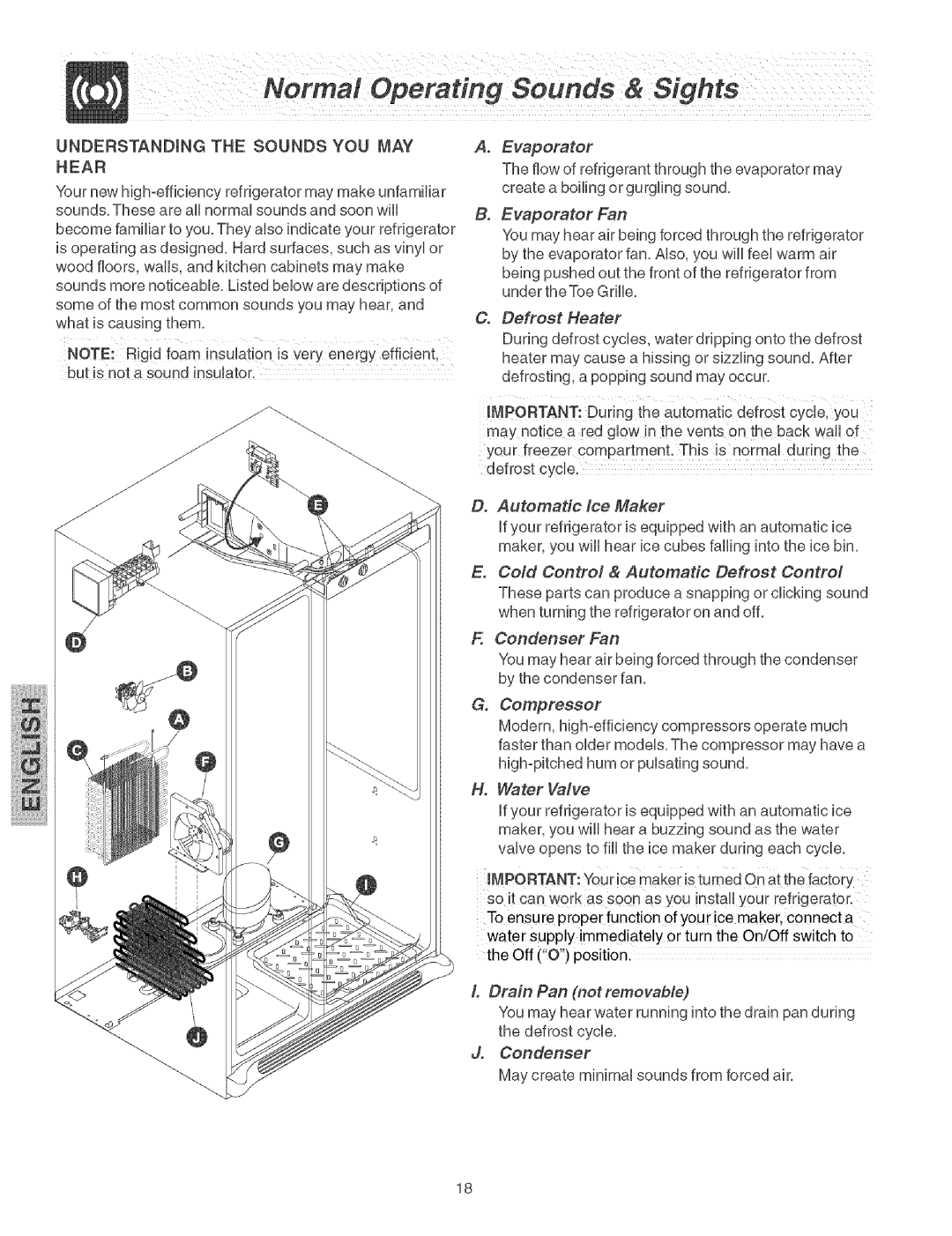
Normal Operating Sounds&Sights
UNDERSTANDING THE SOUNDS YOU MAY HEAR
Your new
become familiar to you. They also indicate your refrigerator is operating as designed. Hard surfaces, such as vinyl or wood floors, walls, and kitchen cabinets may make sounds more noticeable. Listed below are descriptions of some of the most common sounds you may hear, and what is causing them.
NOTE: Rigid foam insulation is very energy efficient, but is not a sound insulator.
A.Evaporator
The flow of refrigerant through the evaporator may create a boiling or gurgling sound,
B.Evaporator Fan
You may hear air being forced through the refrigerator by the evaporator fan. Also, you wiii feel warm air
being pushed out the front of the refrigerator from under theToe Grille.
C.Defrost Heater
During defrost cycles, water dripping onto the defrost heater may cause a hissing or sizzling sound. After defrosting, a popping sound may occur.
iMpORTANT: During the automatic defrost cycle, you may notice a red glow in the vents on the back wai! of your freezer compartment. This is normal during the
defrost cyc!e.
D. Automatic Ice Maker
if your refrigerator is equipped with an automatic ice maker, you wiii hear ice cubes falling into the ice bin.
E. Cold Control & Automatic Defrost Control
These parts can produce a snapping or clicking sound when turning the refrigerator on and off.
F. Condenser Fan
You may hear air being forced through the condenser by the condenser fan.
G.Compressor
Modern,
H.Water Valve
if your refrigerator is equipped with an automatic ice maker, you will hear a buzzing sound as the water valve opens to fill the ice maker during each cycle.
To ensu re proper function of you r ice maker, connect a water supply immediately ortum the On/Off switch to the Off ("0")position.
to Drain Pan (not removable)
You may hear water running into the drain _an during the defrost cycle.
Jo Condenser
blay create minimaUsounds from forced air,
18
